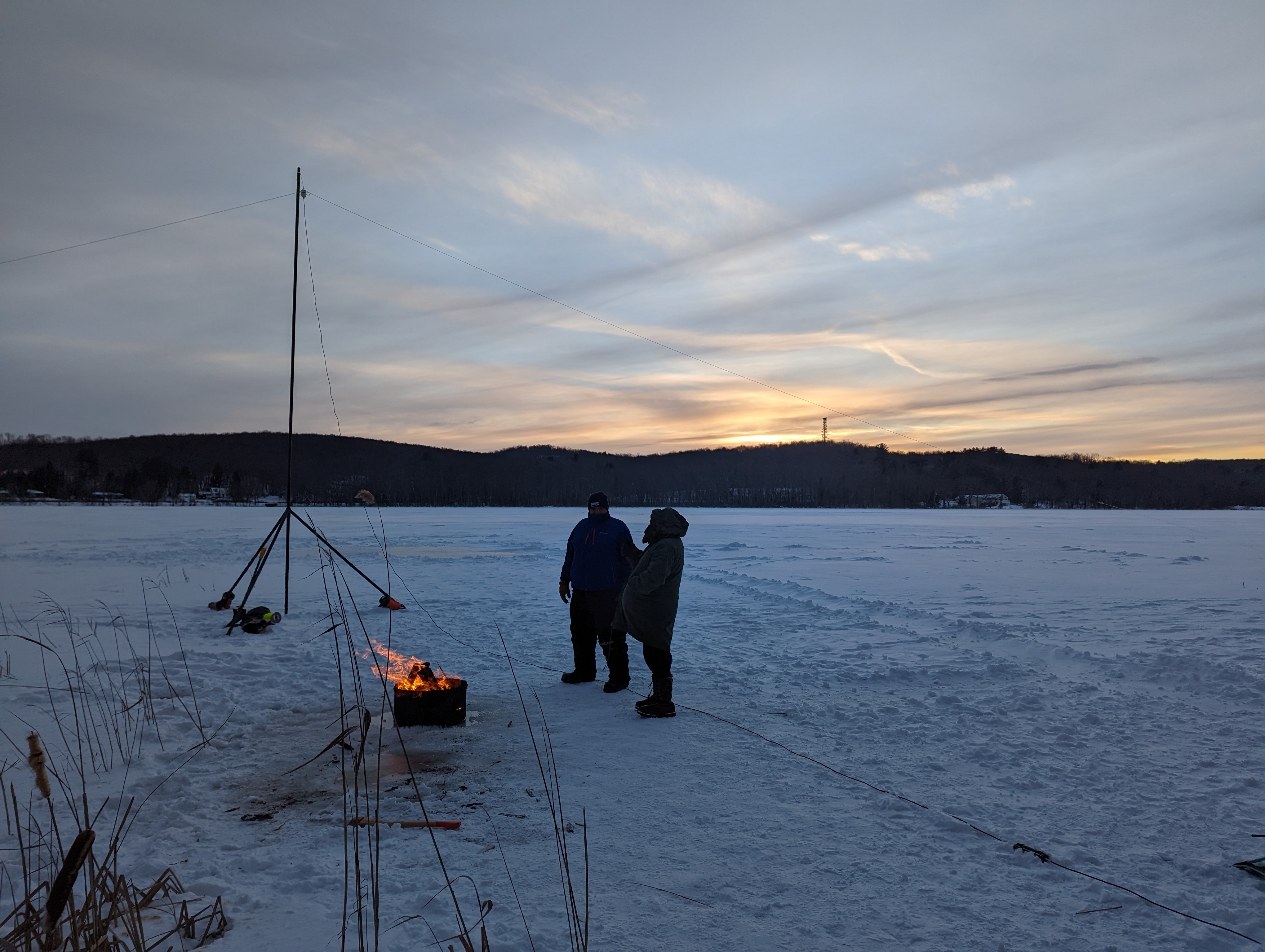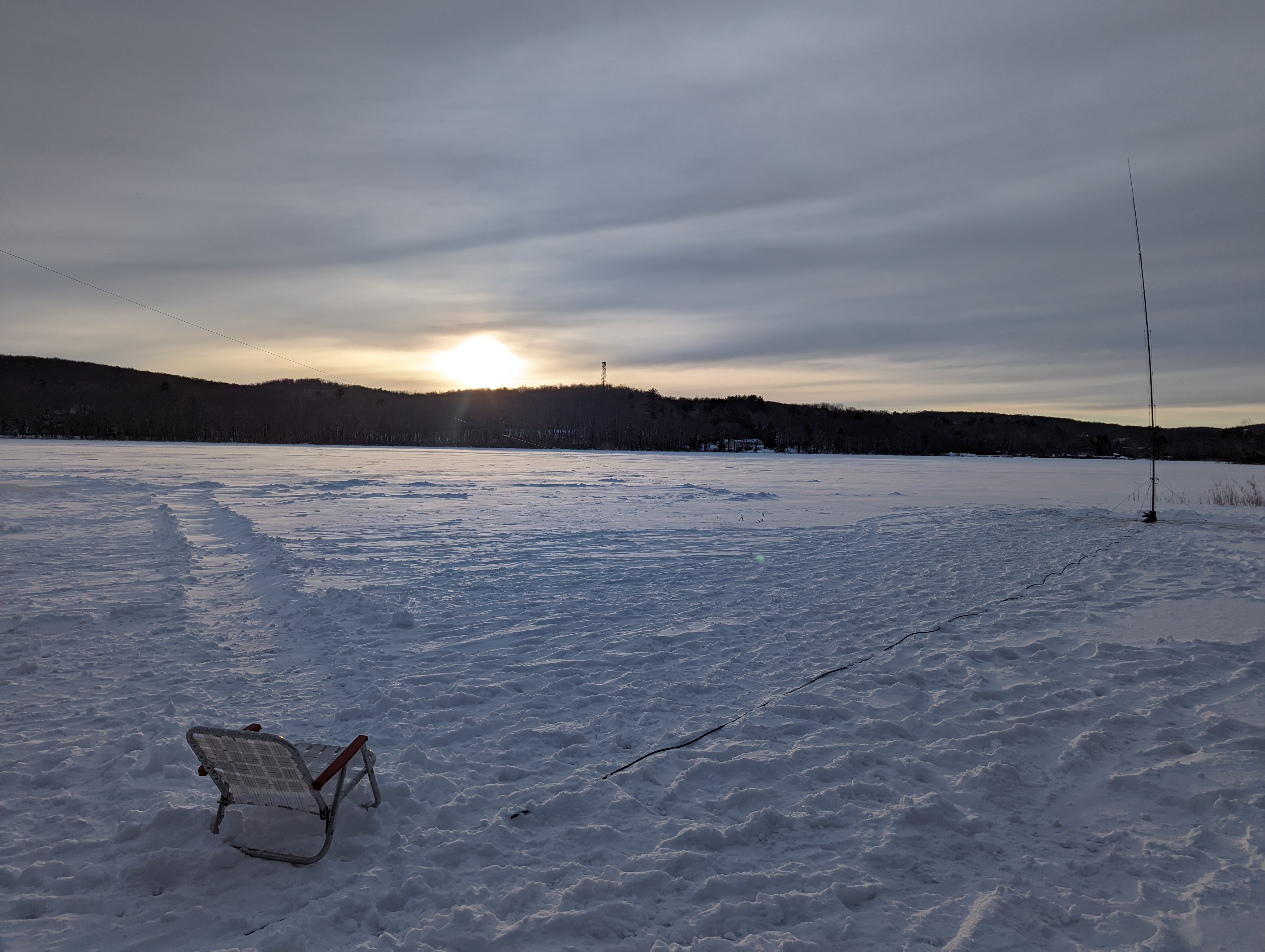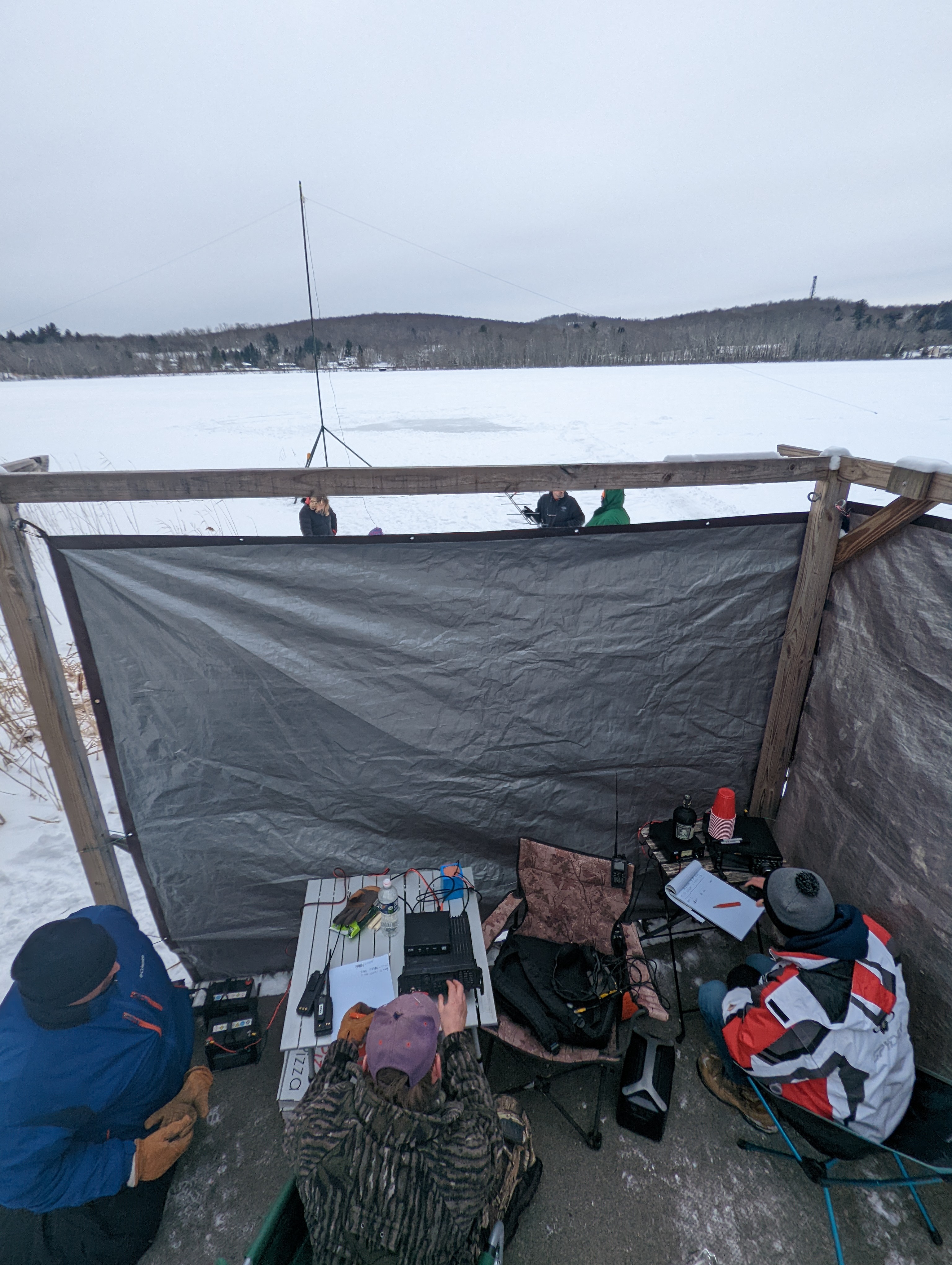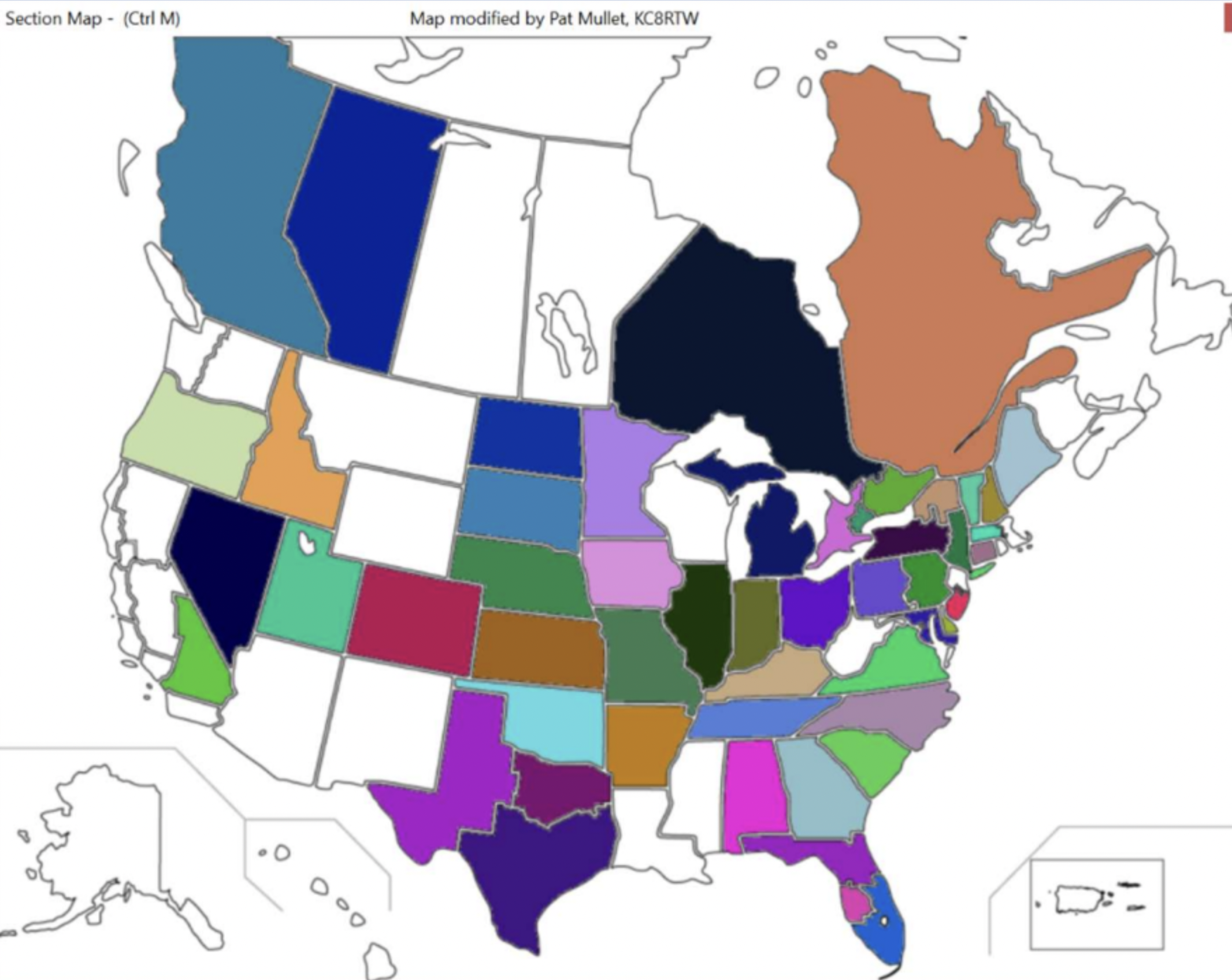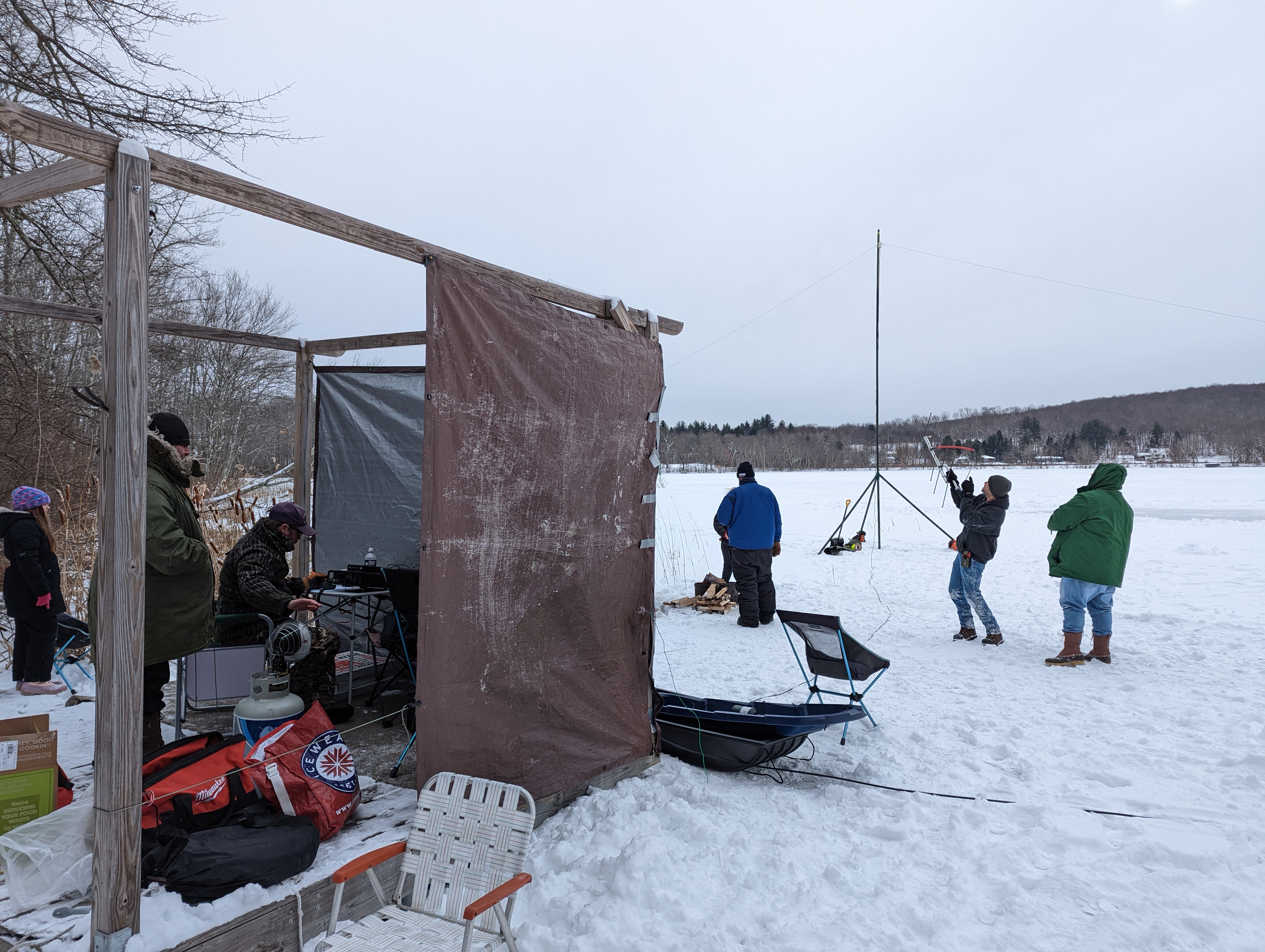On January 29th and 30th, a dedicated group of volunteer radio operators set up their equipment outside on a frozen lake to try and communicate with as many other stations as possible. Using only battery power and field expedient, portable equipment, Sullivan County ARES members contacted 165 stations across the USA and Canada.
Planning
Planning for the Field Day exercise included an online Zoom meeting for the entire group, as well as committee calls and a running dialogue on the Hudson Hams Discord Server. A planning document was established outlining the equipment to be utilized, who would be responsible for what, as well as operating times, parking plan etc. The plan was altered when the weather forecast was downgraded. When conditions on site were ultimately serviceable, the original plan was used. Planning document attached. An after-action meeting was additionally held on Hudson Hams.
Equipment
Equipment included a Yaesu FT10DX provided by KI2D, with a portable power supply, a Jackery Solar Generator. His DX Commander Vertical antenna was set up and guyed out on the ice. That antenna works on 10 meters, 12, 15, 17, 20 and 40 meters. It performed excellently with the large radial field deployed on top of the ice and with the low takeoff angle was helpful in landing some of the farther away contacts out on the west coast.
The second station consisted of an Icom IC-7200 provided by KC2OQV. The radio was powered by two 12-volt batteries typically connected to his portable solar setup. With the heavy cloud cover, the solar array was not deployed. The antenna for that station was an off center fed dipole (OCF) capable of operating from 10 meters to 80 meters. It was raised using a military mast system provided by KN2X, and established in an inverted V configuration. The antennas were guyed using special screws intended for utilization in ice, with a handy adapter for the drill bit, provided by NG2B.
Mode of operation was HF Single Sideband (SSB). No FM, CW or digital modes were used for this exercise.
KD2RYX Patrick also brought his Satellite equipment to try and establish communication via satellite repeater. Although we heard a large number of stations, we were unable to break through the pileup using our portable equipment. Many home stations using higher power are likely the cause of that. Operating Station
The operating station was a small wooden platform that serves as KI2D’s floating dock during the summer months. Two sides were blocked off with tarps to try and keep some of the wind off the operators. A rug was put down on the wood to help keep feet a bit warmer, and NG2B brought a small propane heater attached to a bbq tank. Placed directly between the two stations it permitted the operators to warm up the hand that had no glove while operating.
Logging
Unlike June Field Day, logging was accomplished using pen and paper. It was felt early on that the notebooks would likely not do well in the cold and any precipitation would be bad for them. Logging on paper however is unable to account for duplicate contacts, but it did work. To be revisited for next year.
Weather
Temperatures ranged from 12-15F, with variable winds of 5-14mph and wind chills as cold as ± -3F. The fact that the winds were not nearly as bad as predicted provided the group with the opportunity to set up not just a scaled down station, but two full stations as the original plan contemplated.
Results
Over the duration of the event, Sullivan County ARES team members made 165 Contacts, for a score of 1,980 points. This is a dramatic increase over the 2021 results which was a total of 14 contacts. These 165 contacts, which were made on 15, 20 and 40 meters, were spread across the country and up into Canada. One DC contact was made into Costa Rica. Points were not the main objective of Sullivan County ARES for this exercise. Proper planning and execution of the plan was our primary goal. To that end we quite successfully achieved that, had some fun and generated our best points effort as well.
It is worth noting that although Winter Field Day is designed to be an outdoor, self-powered exercise, the vast majority of stations contact by our station were operating indoors. Of the 165 stations contacted by Sullivan County ARES, 81% were operating either from home or at an indoor location. Only 18% were operating outdoors on battery power as the exercise intended.
Extreme cold weather across the country may have contributed to that result.
Lessons Learned
- Understanding the capacity of both your equipment and batteries in extreme cold is not a theoretical exercise. Operators need to get out there and do it, and learn the limitations of both their equipment and selves.
- In the extreme cold, pencils work better than pens
- Headphones would have been helpful for not hearing adjacent operators.
- Band pass filters may have alleviated some of the minor interference from the two closely placed stations. Definitely worth looking into for June Field Day where more stations are present.
- Food is good. We had cancelled plans to BBQ due to the inclement weather. As such, we brought no food. W2COD saved the day by showing up with a bunch of very appreciated pizzas.
Conclusion
It is the goal of Sullivan County ARES to train licensed amateur radio operators to be prepared to assist local communities with emergency communications where needed. This training includes utilizing real world applications to simulate different scenarios. The 2022 Winter Field Day exercise succeeded in better preparing our group to be able to provide service should it ever be required.
